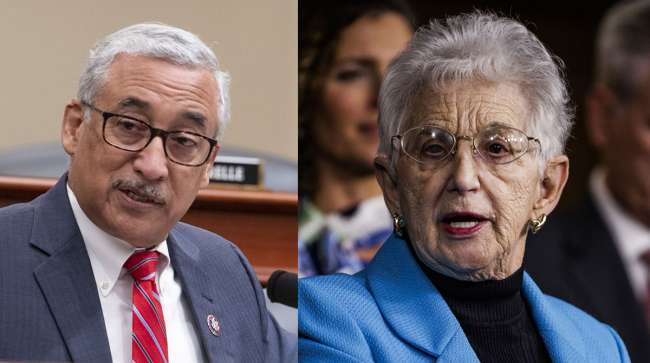Senior Reporter
House Passes Workforce Bill

[Stay on top of transportation news: Get TTNews in your inbox.]
Legislation meant to facilitate access to employment opportunities and training for individuals in the marketplace was passed by the U.S. House of Representatives this month.
Lawmakers voted 220-196 on the bill that would update the Workforce Innovation and Opportunity Act (WIOA).
Democrats largely supported the bill’s passage.
This legislation would more than double the number of people receiving training services in fiscal year 2023.
Rep. Bobby Scott (D-Va.)
“The Workforce Innovation and Opportunity Act of 2022 addresses this chronic underinvestment so that we can finally meet the needs of workers and businesses, fill job openings with qualified workers, reduce supply chain shortage and lower costs for families,” Rep. Bobby Scott (D-Va.), chairman of the House Education and Labor Committee, said May 17. “This legislation would more than double the number of people receiving training services in fiscal year 2023 and allow us to train 1 million workers per year by 2028.”
Specifically, the measure would back workforce development programs by more than $70 billion at the U.S. Department of Labor. The aim would be to assist about a million workers annually by 2028.

Host Michael Freeze discusses insurance coverage and costs with Jane Jazrawy of Carriers Edge and David Berno of Hub International. Tune in above or by going to RoadSigns.TTNews.com.
The bill also would establish a Department of Labor program designed to assist with the transition to employment for individuals released from incarceration. It would expand summer and year-round youth employment opportunities, and re-emphasize partnerships between employers and community colleges. Such partnerships would be meant for high-quality training programs.
Additionally, the bill would fund workforce development systems as a way to ensure prospective employees gain access to long-term careers.
“This legislation is the product of a largely bipartisan, yearlong effort, including a bipartisan roundtable and three bipartisan hearings in our committee,” Scott said.

Hoyer
House Majority Leader Steny Hoyer (D-Md.) added, “The funding this bill authorizes would be a down payment on America’s continued job growth, which has been unprecedented since the start of the Biden-Harris administration, with the creation of more than 8.3 million new jobs — and the launch of more than 5.4 million new small businesses.
“It is broadly recognized that closing the skills gap and expanding our trained and skilled workforce will help us fight inflation by strengthening our base of workers to make the most in-demand products right here in America and reduce our reliance on imports.”
The Senate has yet to consider the bill.
Despite the overwhelming support from House Democrats, nearly every Republican in the chamber opposed the bill.
The committee’s top Republican, Rep. Virginia Foxx of North Carolina, argued, “It’s time to stop being so frivolous with taxpayer dollars. This bill proposes pouring more money into an already expensive program. In [fiscal year] 2021, taxpayers spent $1.8 billion on programs under Title I of WIOA alone.
This bill proposes pouring more money into an already expensive program.
Rep. Virginia Foxx (R-N.C.)
“This is too much money, especially as inflation is still at a 41-year high. The House of Representatives has been entrusted with the power of the purse; it is time we took this responsibility more seriously. The nation deserves a workforce system that will actually prepare Americans for in-demand jobs. Unfortunately, this bill fails to protect taxpayers at a time of rampant inflation, pushes a radical progressive agenda, expands federal control over the workforce and embraces the failed status quo rather than pursuing opportunities for innovation.”
According to the Department of Labor, the program is designed to require states to “strategically align their core workforce development programs to coordinate the needs of both job seekers and employers through combined four-year state plans with greater flexibility than its predecessor program.”
The program also “promotes accountability and transparency through negotiated performance goals that are publicly available” and “fosters regional collaboration within states through local workforce areas.”
The Labor Department indicated it collaborates with officials at the departments of Education and Health and Human Services to provide resources for state agencies, nonprofits and stakeholders.
Want more news? Listen to today's daily briefing below or go here for more info:

